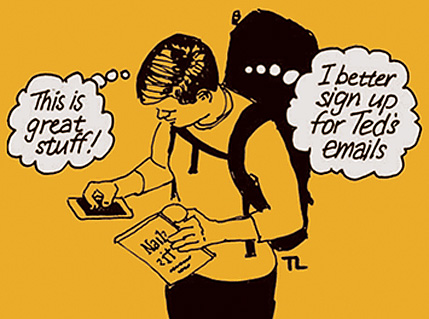Invited to Become a Design Partner?

What designer hasn’t dreamed of creating their own product that would wow the market and make tons of money? Think James Dyson. For several of my clients, this possibility recently presented itself in the form of an equity partnership. Here’s one scenario:
Mike has 15 years’ experience as a design firm owner. Previously, he worked in Paris for a grand luxury brand, then moved to a great U.S. packaging house to lead their luxury effort. Recently, one of Mike ’s long-time clients said, “We want to create a luxury brand and we want you to do the design work for a piece of the action.” That is to say, Mike would do the work for a percentage of the equity and potential profits.
It would be a four-way partnership — Mike, his client, a lawyer, and an investor. They offered Mike $50,000 to cover out-of-pocket costs involved in creating a new premium brand. The three original partners each held 25%, and they offered him 10%. He accepted on the spot. Mike approached me because he regretted his decision. He had been in a good bargaining position, but failed to negotiate a larger share. Why?
- Mike feels needy. Business is steady, but clients keep pressing him to reduce costs. He feels under the gun to grow and perform better.
- Mike is afraid. He knows luxury is the place to be, but with increasing competition and resulting price pressures, he is feeling the heat and is afraid that his top talent may start looking elsewhere.
- Mike has always dreamed of owning his own brand. He has longed for the opportunity to design without the pressure of billable hours and client demands. Mike envies the power of his wealthy luxury clients. This is his chance to join the club.
So, when Mike was offered 10%, he was thinking about his vulnerabilities on the one hand, and path to glory on the other. Mike rushed to close, like many creative people do. In his haste, he overlooked signals and information that could have helped him negotiate:
- They threw out both 10% and 25%. That meant they were telling Mike the range.
- If Mike didn’t ask for more than 25%, he’ll never get 25.
- Mike would need to be at least an equal partner to have their respect going forward.
- Their schedule didn’t give them enough time to find another design firm.
- Only Mike had the luxury experience they need to make this successful.
So, how can you avoid this same situation?
Plan and prepare for negotiation:
- Examine your feelings. Being in control of one’s emotions is critical to negotiating any deal. Talk with your most trusted confidante about your feelings and what may be driving them. Make a list of all the pros and cons in advance.Mike knew this opportunity was coming and should have examined his feelings about the upcoming meeting. Instead, he focused on his weaknesses, rather than the strength of his position. He felt he needed the job, instead of “I am the best person for the job, and they know it.” And, he dreamed of glory, rather than evaluating the real possibility that his investment might come to naught.
- Learn the language of negotiation. Mike was afraid to ask questions, thinking it might sink the deal. Most of us avoid confrontation — this is what the guys on the other side of the table count on — but learning to use non-confrontational language to explore the options is always appropriate. The most important question is, “Help me understand why. . . (why you get 25% and I’m getting 10%?) ” or, fill in the blank.
- Never make a deal on the spot. Always take time to think about it. When you are negotiating you must remember that you have all the time in the world.
In Mike’s case, he felt badly about the deal, and knew he wouldn’t be able to do his best work under the circumstances. Fortunately, anything can be renegotiated. It will be better to challenge the deal at the outset, and maybe even walk away from it, rather than have the work, and their future relationship, soured by bad feelings.
This article originally appeared at Beauty Packaging.

